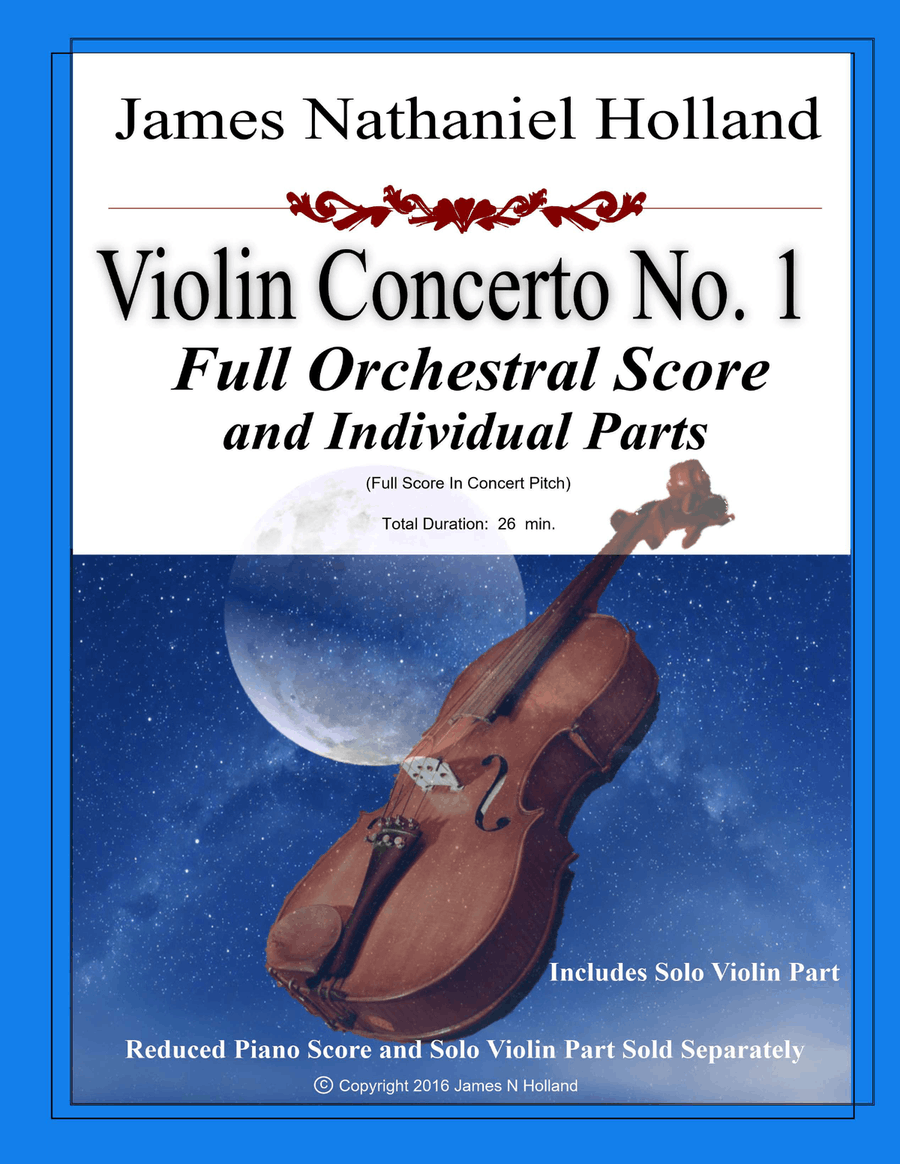Full Orchestra - Level 5 - Digital Download SKU: A0.730459 Composed by James Nathaniel Holland. Concert,Contemporary,Holiday,Patriotic. Score and parts. 232 pages. James Nathaniel Holland #3569503. Published by James Nathaniel Holland (A0.730459). (Duration: 26 minutes) One the most gorgeous classical music concertos of our century waiting for its violin virtuoso to champion it… writes the Milan American Music Society Offered here the full score in concert pitch and all individual parts. Instrumentation: picc, fl12, ob12, cl in A, 12, Bcl, Bsn 12, hrn 1234, Bb tpt 12, trm 12, tba, tim, perc. (bass drum, calabasa, tri., susp. and crash cym, sm. gong. and snare), harp, soloist, strings. Echoes of Elgar, R. Strauss, and Vaughn Williams. The concerto begins majestically with the section entitled (the mountains), then transforms into an African type melody (Costa Rica coffee dreams), then a beautiful sentimental melody (sentimental love) and a rousing scherzo (carnival). Reduced piano score with violin part sold separately. YouTube presentation with orchestra at: https://www.youtube.com/watch?v=j6YqKEvfVIU James Nathaniel Holland is an American-Costa Rican classical music composer of operas, symphonies, ballets, songs, and other musical concertworks that incorporate a unique, eclectic, blend of romantic, classical, world and jazz styles.
